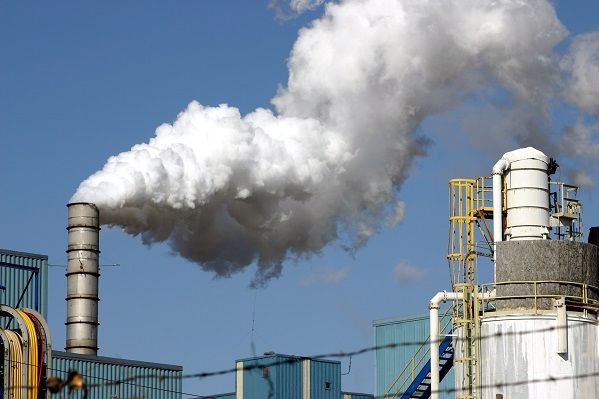Polychlorinated dibenzo-p-dioxins (PCDDs or Dioxins) and polychlorinated dibenzofurans (PCDFs or Furans) are created as an unintended by-product of a number of human activities like combustion, certain types of chemical manufacture, chlorine bleaching and other industrial processes.
Among the 210 dioxins and furans, 2,3,7,8-tetrachlorodibenzo-p-dioxin (TCDD) is the dioxin congener with the highest acute toxicity in the group. I tis considered the most toxic man-made substance and the fifth most toxic naturally occuring compound known to man.
|
Dioxins and furans exhibit:
|
Global mobility of dioxins and furans. Dioxins and furans are travelling around the globe, where in low latitude, the phenomena of evaporation of dioxins is more important than their deposition. In mid latitudes, dioxins are submitted to seasonal cycling of deposition and evaporation. Wheras at high latitudes, deposition of dioxins prevails on their evaporation. As long range atmospheric transport and long range oceanic transport occur, dioxins can be found in organisms and tribe inhabitants near the poles, where no PCDD/F polluting industries are present.

Dioxins grasshopping, or shorter range atmospheric transport contributes as well to the pollution of nearby locations by the different PCDD/F congeners. Another phenomena is the global distillation, with fractionation where dioxins and furans are travelling according to their relative mobility.
Bioaccumation of dioxins and furans. Dioxins and furans compounds are persistent in the environment, lipophilic and ubiquitous. They accumulate in biological tissues. Many studies conducted by different Institutions or research centres have shown their biochemical and biological effects on animals and humans. Scrutiny of the environmental community and most of all of the feed stock and food community is therefore at high level to check for these compounds in the different medias.
|
Dioxins are indeed highly fat soluble, difficult to metabolise and tend to accumulate in the fatty tissues of cattle. This leads to bioaccumulation in the food hain and the biomagnification increases the human exposure levels. Dioxins have been found in meat, dairy products, fish and also in human breast milk. |
Why dioxins and furans are of concern. Dioxins and furans bind to aryl hydrocarbon (Ah) receptor proteins of cells, causing a toxic response. TCDD is classified by the International Agency for Research on Cancer as carcinogenic to humans (http://publications.iarc.fr/Book-And-Report-Series/Iarc-Monographs-On-The-Evaluation-Of-Carcinogenic-Risks-To-Humans/Polychlorinated-Dibenzo-Para-Dioxins-And-Polychlorinated-Dibenzofurans-1997). Visible adverse effect to dioxins acute exposure is chloracne. Acute exposure may cause nauzea, vomiting, diarrhoea, hepatic damages and negative neurological effects. Chronic exposure to dioxins may cause liver disease, alterations of thyroid function, impared immune function, cardiovascular disease, decreased performance in tests of learning and intelligence, etc.
Sources of dioxins and furans. Primary sources are industrial and combustion processes, either stationay or diffuse sources. In the past the chemical and the pulp and paper industries were the main dioxins sources. Nowadays thermal processes are the most important sources for dioxins and furans emission. Secondary sources of PCDD/F include sewage sludge, biosludge, compost, pentachlorophenol treated wood, PCBs from transformers, contaminated chemical products such as 2,4,5-T and contaminated areas. They are reservoirs with possible release of dioxins and furans to the environment.
|
Process of formation of dioxins during incineration
|
Fate of dioxins and furans in the environment. Dioxins and furans are hardly identified in water (low solubility). PCDD/F are resistant to oxidation and hydrolysis (low efficiency of these degradation processes), photodegradation and microbial transformations are the most important routes. Polychlorinated dibenzo-p-dioxins and polychlorinated dibenzofurans are immobilised by absorption on organic carbon in soil. They mobilise in presence of lipophilic solvents or during erosion and rains. Soil does not play the main role in environmental contamination and population exposition, but is an excellent indicator of dioxin pollution. The air compartment is the most significant for environmental distribution and fate of dioxins and furans. For the part of dioxins in gazeous state, removal processes include chemical and photochemical degradation. For the part of dioxins bound to particles, the transport range depends on the particle size.
Dioxins and furans exposure pathways. In the past they were mainly occupational exposures during chlorophenol production, chlorphenoxy herbicides production, metal production and recycling and industrial accidents. Nowadays the main path for exposure to dioxins is the food chain contamination.
Similar compounds exhibiting similar toxic properties, which can pose similar risks to both animals and humans, were also identified and are under scrutiny as well: coplanar PCBs.
|
Use of PCBs
|
Another emerging group of concern is represented by Polybrominated Diphenyl Ethers (PBDEs), which constitute one class of brominated flame-retardants that have been used globally for the past 30 years. PBDEs are used in a variety of consumer products such as electrical appliances, building materials, and textiles in order to retard their combustion. Recently they have gained increased attention as “Emergent Chemicals” because of their persistence in the environment, potential for bioaccumulation, and potential toxicity.







